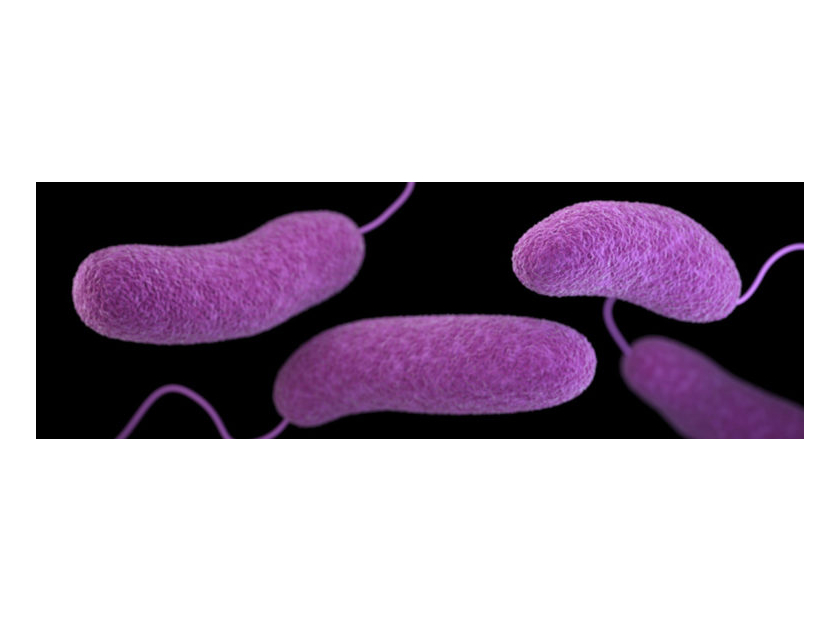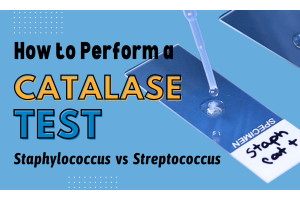Vividly View Vibrio
Next up for CHROM month, We examine HardyCHROM Vibrio and the risks of shooting back oysters on the half shell...
Summer is fast approaching and beach goers everywhere are rejoicing. Warmer weather, sunny skies, and fresh seafood: what's not to love about summer? Well, the warmer weather brings something else besides people to the coastal waters. Summer is prime time for Vibrio.
Vibrio is a genus of Gram-negative bacteria shaped as a curved bacillus (rod). This troublesome pathogen is particularly known for its ability to cause foodborne infections, typically associated with the ingestion of raw or undercooked seafood. Vibrio spp. are facultative anaerobes meaning an organism that makes ATP by aerobic respiration when oxygen is present but capable of switching to fermentation is oxygen is not. They test positive for oxidase and thankfully do not form spores so they are easy to get rid of through proper heat treatment in cooking. Vibrio spp. are motile species, moving through salty waters with flagella.
 As we said earlier, Vibrio is most commonly associated with raw or undercooked seafood, particularly shellfish. Warmer waters are more prone to carry infected shellfish. Summers are therefore Vibrio's favorite season. Paired with the fact that more people are likely to eat seafood during the summer months, particularly oysters, the risk for foodborne pathogenic infections skyrockets during this time. It is because of this that some states like Massachusetts actually have a "Vibrio season" where the state and local governments actively try to dissuade the consumption of raw seafood.
As we said earlier, Vibrio is most commonly associated with raw or undercooked seafood, particularly shellfish. Warmer waters are more prone to carry infected shellfish. Summers are therefore Vibrio's favorite season. Paired with the fact that more people are likely to eat seafood during the summer months, particularly oysters, the risk for foodborne pathogenic infections skyrockets during this time. It is because of this that some states like Massachusetts actually have a "Vibrio season" where the state and local governments actively try to dissuade the consumption of raw seafood.
Pathogenic Vibrio species include V. cholerae (notoriously associated with many pandemic outbreaks caused by contaminated drinking water,) V. parahaemolyticus, and V. vulnificus.
Vibriosis symptoms include watery diarrhea, abdominal cramps, nausea, vomiting, fever, and chills. Symptoms can last up to 3 days after ingestion of the infected food and can be much more serious to those with weakened immune systems. Vibrio can also cause a fairly serious infection if an open wound comes in contact with salt water.
 Vibrio spp. as seen on HardyCHROM Vibrio, Part No. G319
Vibrio spp. as seen on HardyCHROM Vibrio, Part No. G319Hardy Diagnostics is committed to helping labs around the world detect, diagnose, and prevent disease and we continue this commitment with HardyCHROM Vibrio. HardyCHROM Vibrio is a selective and differential chromogenic medium recommended for the cultivation, isolation, and differentiation of Vibrio spp. from food and environmental samples.
HardyCHROM Vibrio is the only chromogenic media to differentiate between V. cholerae, V. parahaemolyticus, and V. vulnificus on the same plate. With greater sensitivity and specificity than TCBS and at a fraction of the cost of molecular methods, HardyCHROM Vibrio is the obvious choice for detecting Vibrio spp. in food and environmental samples.
Disclaimer: HardyCHROM Vibrio is NOT intended to be used for the diagnosis of human disease.
For more information, visit the HardyCHROM Vibrio web catalog page.
Not a Hardy Diagnostics customer? Contact us at Sales@hardydiagnostics.com and let our Culture of Service take care of your every need.







